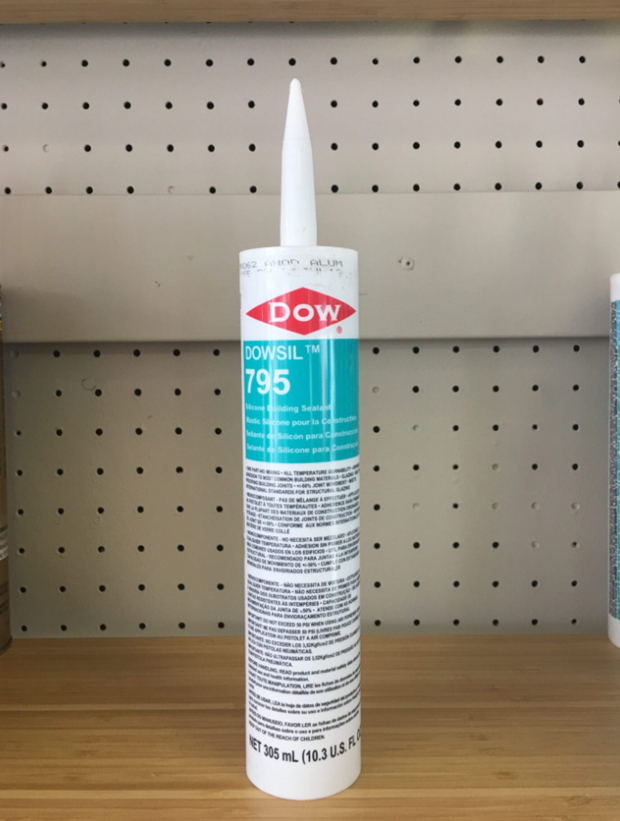Silicone Sealants 101: Why Are They so Common?
When building a new home or renovating an existing one, it’s crucial to ensure that everything fits perfectly and seals properly in the process. For the longest time now, this has been the job of none other than sealants.
First in the form of mud and today mainly in the form of silicone, sealants have come a long way. However, their purpose has stayed the same, which is to fill gaps and irregularities between two different surfaces.
In the same way you apply a wood finish to protect the material, sealants are used to do that and more. They are applied using a caulking gun, and the paste can then be shaped into any form with a squeegee, so that the end product appears smooth and as if it’s part of the surface.
How Silicone Sealant Works?

Adhesion Strength
The adhesion of every sealant, including silicone adhesive, works thanks to molecular interactions between the surface and the adhesive. This forms a temporary bond between dissimilar materials thanks to the low surface energy of construction silicone sealants. Certain factors affect the strength of the adhesion, such as a clean surface, dryness and the smoothness of said surface.
Properties
Not only does silicone have a more than strong enough adhesion, once cured, it also has some properties that help bring it to a different level. Silicone can handle temperatures well and the elements, especially if used indoors, can last a long time. The bond is maintained quite well even if it’s exposed to the sun all day, every day.
Factors
The performance of silicone adhesive is affected mainly by humidity, especially during the curing process. This is why it’s important to let silicone cure in a dry and somewhat clean environment so that the bond lasts a lot longer and no cracks form after years of exposure to various external factors like moisture. It’s all about getting it right during the curing process that makes silicone sealant a worry-free solution afterwards.
What Are the Benefits of Silicone Sealant?
Temperature
Silicone sealants are praised mostly for their ability to withstand exposure to extremely high temperatures. Typically, they’re able to keep up with temperatures falling between 200°C and 250°C, which makes it a great all-around solution for pretty much every job.
Insulation
If you want to make your home more efficient, especially during colder months, silicone sealant is your best friend. That’s because silicone alone is quite an insulating material. The fact that it can withstand such high temperatures is proof enough that no heat can get through as easily as with other sealants.
Durability
A strong bond makes for a long-lasting solution and silicone offers exactly that. Silicone easily outperforms rubber sealants when it comes to taking a beating and lasting a long time while at it. This is why silicone sealant is often used in bathrooms.
Aesthetics
Available in different colours and in a colourless variation, silicone blends in perfectly in almost every place you use it. It’s also easy to clean up, which means your finish can look as if there was no sealant at all.
Water
If you need a sealant that has excellent water resistance, then look no further than silicone. That’s because it can keep water and moisture out, no matter if it’s just dripping or hailing it down. Silicone sealant is even used to repair aquariums and to seal pools.
Thermal Stability
The ability to survive high levels of heat means that silicone is a thermally stable sealant. This means that no matter how awkward the gap it needs to fill, it won’t crack or deform as easily when exposed to heat, whether it’s directly focused on the sealant or not.
Chemical Reactivity
There are plenty of silicone adhesives that emit no VOCs at all, which makes them a rather safe solution. This also makes a silicone sealant one that doesn’t react with other chemicals when it comes in contact with them.
Types of Silicone Sealants
Acetoxy Cure
At the core of an acetoxy-cure silicone sealant is acetic acid, the main component of vinegar. That is why, while this type of sealant is curing, it emits a smell much like that of vinegar. Alongside water, acetic acid makes for a sealant that loses its adhesion in minutes while it cures up to 24 hours. However, acetoxy silicone sealant should not be used on brass and copper or near delicate electronics, as they can be damaged by the acid.
Neutral Cure
With a neutral cure silicone sealant, you get a solution that releases alcohol as it’s applied and as it cures. While this silicone doesn’t adhere as quickly, it does, however, work on any surface, including the metals and electronic components that acetoxy sealant can’t be used on. This makes it a more versatile option and one that has better weather resistance, as it can be used outdoors. One downside is that neutral cure silicone adhesives take up to 24 hours to dry off and anywhere between 48 and 72 hours to cure.
